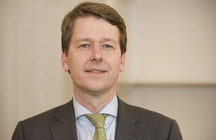John Glen – 2019 Speech at the Wealth of Diversity Conference
Below is the text of the speech made by John Glen, the Economic Secretary to the Treasury, on 5 February 2019.
Charles Babbage, the computer pioneer asked the following question in 1864: “if you put into the machine the wrong figures, will the right answers come out?”.
Nearly 150 years later, this question is still being answered.
By companies and industries of all shapes and sizes.
Take the next frontier of commerce: Artificial Intelligence, the next innovation set to transform financial services.
I was interested to learn that sophisticated programmes which employ AI operate much as we do as humans.
For example, AI is increasingly being shown to produce similar biases to those in the workplace.
A 2015 study showed that in a Google images search for “CEO”, just 11% of the people it displayed were women – even though 27% of the chief executives in the US are female.
The world’s major technology companies are starting to recognise that machines learn from the input they receive – and the results that this input generates.
Despite great intentions, seemingly subtle actions and moments can really entrench toxic or biased cultures.
And in this vein, I want to extend a huge thank you to PIMFA – Liz and her team are doing a lot of work to push the need for diversity to the top of commercial agenda.
Today I wish to speak to you about the business case for diversity and inclusion…
…and give my two cents on the best way to get there.
And the first step is welcoming diversity…as a matter of principle – and profit.
We need an inclusive workforce for many reasons – and ethics is but one of those reasons.
It is simply the right thing to do and to expect.
And it is a hallmark of a civilised society.
Ethics aside, there is more than anything, a strong commercial case for real diversity.
Diversity of thought leads to better outcomes…
…a happier workforce…
…reflects shareholder values…
…and is increasingly attractive to investors.
A report by the CBI in 2016 concluded that diverse workplaces generate innovation and greater employee engagement…
…employees said that they’re 84% more likely to innovate and more than twice as engaged in workplaces that are diverse and inclusive.
And research by Forbes in 2017 found that inclusive teams make better business decisions than less diverse teams up to 87% of the time.
McKinsey, the management consultant, has released research showing that closing the UK’s gender gap could create an additional £150 billion on top of business-as-usual GDP forecasts for 2025.
Diversity – and inclusion – challenges group think, it strengthens an organisation from within – and, it gives you competitive advantage.
The business case is irrefutable. And I know that you know that. That’s why you’re all here today. So I don’t want to spend my time here today convincing you why this matters – I want to focus on what needs to be done.
Despite the strong commercial argument, Jayne-Anne Gadhia’s [the former CEO of Virgin Money] 2016 review into the representation of women in senior managerial roles in the financial services industry was revealing.
One of the key findings from the report was that women make up just 14% of Executive Committees…
…25% of the firms included in the review had no women at all on their Executive Committee…
…and 17% had no women on their board.
The Treasury decided to take action and in 2016 launched the Women in Finance Charter.
And I’m pleased to say that the Charter has been an enormous success – I am delighted with the impact it has had…
…both in terms of driving the debate…
…and in giving firms a framework to set targets, and then develop and implement a plan.
300 financial services firms have signed the Charter who together employ over 780,000 people…
…close to 60% of the sector.
It includes everyone from global banks to FinTech firms with just a few employees.
We have also inspired other countries, like Brazil and China, to take action on improving gender balance, through their own Women in Finance Charters.
The Financial Reporting Council’s review of board diversity reporting, published in September 2018, found that Charter signatories had a higher diversity reporting score than other FTSE 350 companies.
And I’ve seen the impact the Charter can have within my own department. HM Treasury has set a target to increase the representation of women in the Senior Civil Service to 50% by 2020. In 2017 39 out of the 87 people in the Senior Civil Service were women, equating to 43%. This has now risen to 48.2%, and we are committed to building on this progress.
As we have now generated a large amount of industry support for the Charter, the focus has shifted to maximising its impact…
…by pushing ourselves to set and achieve more stretching targets through the use of evidence-based interventions.
I’m delighted that so many organisations have signed up to the Charter, which demonstrates the enthusiasm across the industry to solve this issue.
But for me the real measure of success is not just the number of organisations who sign up – I want to see firms taking this seriously and taking meaningful action, so we see a real shift towards gender parity.
The second Women in Finance Charter Annual Review will be published in March this year, where signatories to the Charter will provide updates on their progress. I will be looking at these updates closely, to assess whether firms have made sufficient progress and are taking appropriately ambitious action. And I will be using this to inform Government action going forward.
To have a real impact, it is important that we focus on what works, delivering interventions collaboratively and with a collective voice that promotes the progression of women.
Across the whole spectrum of the debate, it is clear that evidence-based interventions to bring about the step change is needed, as progress is slow.
Firms should make a habit of learning from one another, measuring their impact, and self-evaluating.
I am pleased that when I talk to senior leaders in the finance world, diversity and inclusion is increasingly an important issue for them.
Everyone has a role to play in creating a more equal working culture. And so I challenge everyone in this room to think about what you can do to drive change in your own organisation.
If you are responsible for recruiting or promoting people, ask yourself –
Could this job be done by someone working part-time, or someone working flexibly, or someone who is returning to work after taking time out?
Are you using skills-based assessment or structured interviews, so that your decisions are driven by what candidates can really do, rather than a sense of whether they will ‘fit’?
Have you included more than one woman on your shortlist?
If you are a senior leader, ask yourself –
Does your organisation know that you are committed to improving diversity?
How are you communicating this, and how are you holding your team accountable? Are you treating this like any other business priority?
Look at who you mentor and sponsor – does this reflect the widest pool of talent in your organisation?
And whatever your role, ask yourself:
Do you support and encourage difference in your team?
Can you be a role model for someone else?
And I put to everyone the same question I put to senior leaders – does your organisation know you care about this and how are you holding them accountable?
On that note, let me wrap up my remarks this morning.
Ladies and gentlemen – simply, a wealth of diversity will lead to a wealth of outcomes.
The business case is irrefutable…
…getting there is the hard part.
Which is why I want us all, government and industry alike, to focus on action which will drive change – I don’t want us to be having this same discussion in five years.
I hope that you can put the sessions today to good use…
…and that they can be a starting point for pushing the agenda across the industry.
Because although it is a tough discussion…
…it is one that we need to have…
…and it is an issue worthy of no less than national attention.
Thank you very much.


